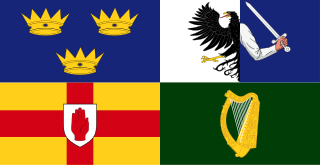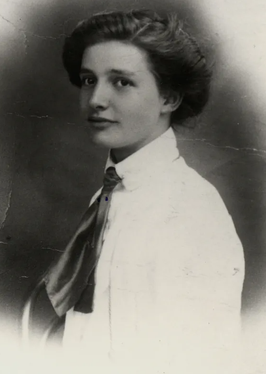Related Research Articles

Irish folklore refers to the folktales, balladry, music, dance and mythology of Ireland. It is the study and appreciation of how people lived.
Jacqueline Simpson is a prolific, award-winning British researcher and author on folklore.
Iona Margaret Balfour Opie, and Peter Mason Opie were an English married team of folklorists who applied modern techniques to understanding children's literature and play, in studies such as The Oxford Dictionary of Nursery Rhymes (1951) and The Lore and Language of Schoolchildren (1959). They were also noted anthologists, assembled large collections of children's literature, toys, and games and were regarded as world-famous authorities on children's lore and customs.
The Folklore Society (FLS) is a registered charity under English law based in London, England for the study of folklore. Its office is at 50 Fitzroy Street, London home of the Royal Anthropological Institute of Great Britain and Ireland.
The Fairy Investigation Society was a semi-secret occult group devoted to collecting evidence and information about the existence of fairies and to organize documented instances of fairy sightings. The society was founded in Britain in 1927 by Capt. Sir Quintin Craufurd, MBE and the artist Bernard Sleigh.
Violet Alford was an internationally recognised authority on folk dancing and its related music, costume, and folk customs. She believed that a common prehistoric root explained the similarities found across much of Europe.

Ethel Rudkin was an English writer, historian, archaeologist and folklorist from Lincolnshire. She pioneered the collection of folk material, particularly from Lincolnshire, and her collections are now part of several public institutions, including the North Lincolnshire Museum.
Walter Leo Hildburgh (1876-1955) was an American art collector, sportsman, traveller, scientist and philanthropist.
Arthur Robinson Wright, better known as A. R. Wright was a British folklorist who was elected President of the Folklore Society, fellow of the Society of Antiquaries and fellow of the Royal Anthropological Institute. He also conducted influential work at the Patent Office.
Venetia Newall (1935–2017) was an English-American folklorist who was elected president of the Folklore Society and fellow of the American Folklore Society.
Sir Arthur Allen Waugh, was a British civil servant in India and folklorist.
Joshua Roy Porter was a British Anglican priest, theologian and author. Having been chaplain and fellow of Oriel College, Oxford, from 1949 to 1962, he was Professor of Theology at the University of Exeter from 1962 to 1986.
Sona Rosa Burstein (1897–1971) was a museum curator, folklorist and historian of gerontology.
Leslie Frank Newman (1882–1973) was a British chemist and folklorist.
Arthur Allan Gomme (1882-1955) was a British librarian, historian of technology and folklorist.
Thomas East Lones (1860–1944) was a British folklorist, noted for his research into British calendar customs.
Alex Helm (1920–1970) was an award-winning British folklorist, described as "one of the most important figures in the study of calendar custom and [folk] dance in post-war England".
Thomas Fairman Ordish (1855-1924), sometimes also referred to as T. Fairman Ordish was a British folklorist, noted for his interest in traditional drama and folk play, early theatre and the history of London. He is credited as having undertaken "the first major investigation of British traditional drama".
Andrew Man was a cunning man and healer in Aberdeen who was tried as a witch in 1597, when an old man, and burnt in 1598. He said that his powers came from the Queen of Elphame – a fairy queen with whom he had regularly consorted. His story is notable as an example of a male witch who was believed to have had a sexual relationship with a supernatural entity - in the case of female witches, they were typically believed to have consorted with the Devil, whereas Man claimed to have sexual relations with a local folkloric fairy queen.
Anna "Anta" Birgitta Rooth was the first Swedish professor of ethnology at Uppsala University. She is known for her research into folklore, especially the Cinderella story.
References
- 1 2 3 "Dr. Patricia Lysaght". askaboutireland.ie. Retrieved 31 March 2021.
- 1 2 "Patricia Lysaght". Royal Irish Academy. 19 October 2015. Retrieved 31 March 2021.
- ↑ O'Connor, Anne (1986). Lysaght, Patricia (ed.). "The Banshee". Béaloideas. 54/55: 276–280. doi:10.2307/20522292. ISSN 0332-270X. JSTOR 20522292.
- 1 2 "UCD Professor honoured for contribution to folklore scholarship". www.ucd.ie. Retrieved 31 March 2021.
- ↑ "Food Research". www.siefhome.org. Retrieved 31 March 2021.
- ↑ "The Coote Lake Medal". The Folklore Society. Retrieved 31 March 2021.
- 1 2 Lysaght, Patricia (3 July 2017). "From the British Museum to the Great Blasket: Robin Flower and the Western Island". Folklore. 128 (3): 219–243. doi:10.1080/0015587X.2017.1336002. ISSN 0015-587X. S2CID 164699923.
- ↑ Lysaght, Patricia (2 January 2019). "From 'Collect the Fragments …' to 'Memory of the World'—Collecting the Folklore of Ireland 1927–70: Aims, Achievement, Legacy". Folklore. 130 (1): 1–30. doi:10.1080/0015587X.2018.1553333. ISSN 0015-587X. S2CID 167150114.
- ↑ Lysaght, Patricia (2 January 2020). "An Artist on Inis Oírr and Inis Meáin: Simon Coleman's Visit to the Aran Islands in 1959 on Behalf of the Irish Folklore Commission". Folklore. 131 (1): 1–33. doi:10.1080/0015587X.2019.1658380. ISSN 0015-587X. S2CID 216541378.